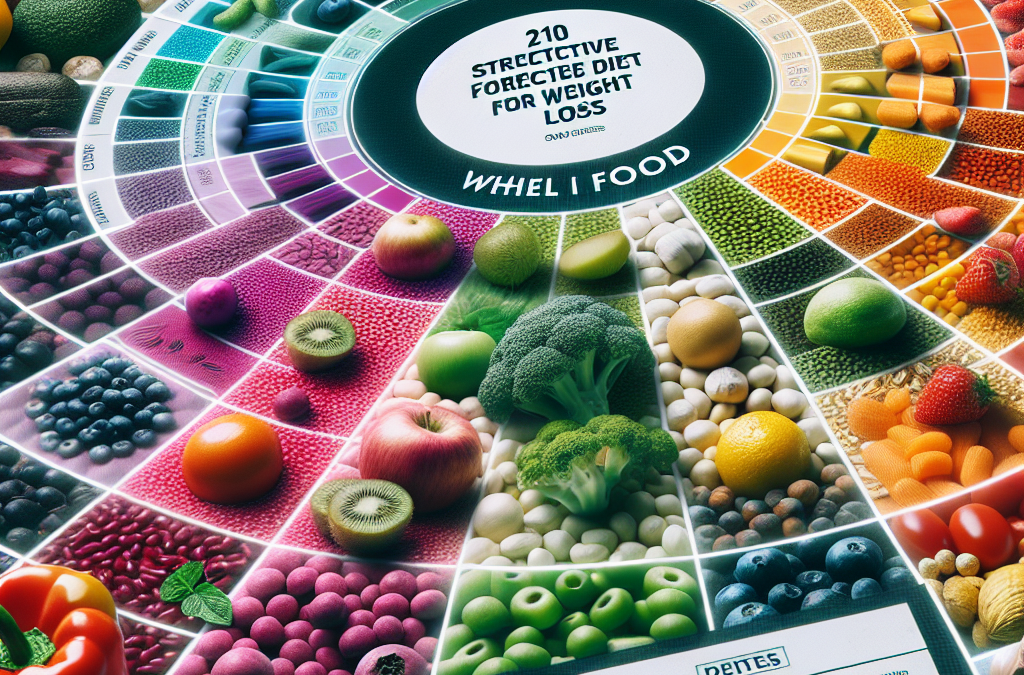- 1. Prioritize Whole, Unprocessed Foods
- 2. Incorporate More Fruits and Vegetables
- 3. Choose Quality Protein Sources
- 4. Minimize Added Sugars and Processed Carbohydrates
- 5. Practice Portion Control Mindfully
- 6. Plan and Prepare Meals in Advance
- 7. Stay Hydrated with Whole Foods-Based Drinks
- 8. Focus on Healthy Fats from Whole Food Sources
- 9. Limit Eating Out and Read Labels Carefully
- 10. Incorporate Sustainable Habits for Long-Term Success
1. Prioritize Whole, Unprocessed Foods
Understanding Whole, Unprocessed Foods
The foundation of a successful whole food diet for weight loss in 2025 is to emphasize foods that are minimally processed. Whole foods such as fresh produce, nuts, seeds, whole grains, and unrefined proteins are rich in fiber, nutrients, and antioxidants that support your metabolism and overall health. Unlike processed foods high in additives, preservatives, and unhealthy fats, whole foods help keep your calorie intake in check while providing essential nutrients.
By choosing whole, unprocessed options, you naturally reduce your intake of excess sugars, sodium, and artificial ingredients. This shift can lead to better satiety, fewer cravings, and a lower calorie intake overall. Many successful weight loss stories in 2025 demonstrate that sticking to unprocessed foods is a cornerstone of sustainable fat loss.
Incorporate more whole foods into your daily meals by reading labels carefully, shopping the perimeter of the grocery store, and avoiding pre-packaged items. This simple change can make a significant difference in your weight loss journey.
Practical Tips for Choosing Whole, Unprocessed Foods
Start by planning your grocery trips around fresh produce, whole grains like brown rice or quinoa, and good-quality proteins such as eggs, fish, and legumes. Whenever possible, buy organic and local items to maximize nutrient quality and reduce exposure to pesticides.
Experiment with cooking your meals at home instead of relying on processed convenience foods. For example, prepare a vegetable stir-fry with lean chicken or tofu, or enjoy a hearty bowl of oatmeal topped with fresh berries. This hands-on approach helps you control ingredients and avoid hidden sugars or unhealthy fats.
Remember, the goal is not perfection but consistency. Gradually replacing processed items with whole foods will set a solid foundation for your weight loss efforts in 2025.
2. Incorporate More Fruits and Vegetables
The Role of Fruits and Vegetables in Weight Loss
Fruits and vegetables are calorie-light but nutrient-dense, making them ideal for a whole food diet for weight loss. Rich in fiber, vitamins, and minerals, they help you feel full longer, reduce overall calorie consumption, and support digestion. In 2025, the trend emphasizes maximizing produce intake as a key weight loss strategy.
Research consistently shows that increasing fruit and vegetable consumption is associated with lower body weight and improved metabolic health. Their natural sweetness helps curb cravings for sugary snacks, while their fiber promotes stable blood sugar levels.
Aim to fill half your plate with colorful produce at each meal. Incorporate seasonal fruits and vegetables for variety and optimal flavor throughout the year.
Practical Ways to Boost Your Intake
Start your day with a smoothie packed with spinach, berries, and banana, or enjoy raw veggie sticks with hummus as a snack. Incorporate salads with leafy greens and vibrant toppings to add volume without many calories. Roasting vegetables like carrots, zucchini, and bell peppers brings out their natural sweetness, making them more appealing.
Use fruits as natural dessertsâbaked apples or berry crumbles with minimal added sugar are excellent choices. Also, explore new vegetable-based recipes to keep your meals interesting and satisfying.
3. Choose Quality Protein Sources
Why Protein Matters in a Whole Food Diet
Protein is vital for preserving lean muscle mass during weight loss and boosting your metabolic rate. In 2025, the emphasis on high-quality, minimally processed protein sources persists as a core strategy for the whole food diet for weight loss.
Sources such as eggs, wild-caught fish, grass-fed meats, poultry, and plant-based options like beans and lentils provide essential amino acids with fewer additives and hormones. Incorporating a variety of these helps balance your nutrient profile.
Consuming adequate protein also enhances satiety, reducing the likelihood of overeating and snacking on unhealthy foods.
Tips for Incorporating Whole Food Proteins
Plan meals around a good protein source, such as salmon fillets roasted with herbs or an omelet loaded with vegetables. Batch-cook lean meats and beans for the week to simplify meal prep.
Choose organic, pasture-raised, or wild options whenever possible to avoid added hormones or antibiotics. Combining proteins with fiber-rich vegetables creates a satisfying, balanced meal that aligns with a whole food diet for weight loss in 2025.
4. Minimize Added Sugars and Processed Carbohydrates
The Impact of Sugar and Processed Carbs
Sugar-laden snacks and processed carbs are major culprits in weight gain and blood sugar spikes. In 2025, the focus is on cutting back on these ingredients to support a whole food diet for weight loss. They often contain hidden sugars and unhealthy fats that sabotage your efforts.
Excess sugars can cause insulin resistance over time, making it harder to lose fat and maintain energy levels. Processed carbs like white bread, pastries, and chips lack fiber and nutrients, leading to quick hunger and overeating.
Replacing these with whole, unrefined options is essential for sustainable weight management.
Strategies to Reduce Sugar and Processed Carbohydrates
Read labels diligently and choose products without added sugarsâopt for plain Greek yogurt, nuts, or whole grain bread instead. Satisfy sweet cravings with fresh fruit or natural sweeteners like honey in moderation.
Cook your own meals using wholesome ingredients. Swap white rice for brown rice or cauliflower rice and choose whole grain pasta. These simple swaps help align your diet with the principles of the whole food diet for weight loss in 2025.
5. Practice Portion Control Mindfully
The Importance of Mindful Eating
While eating whole foods is beneficial, controlling portions ensures you’re not consuming excess calories. In 2025, mindful eating is gaining recognition as a way to foster a healthy relationship with food and support weight loss.
Paying attention to hunger cues, eating slowly, and savoring each bite can greatly enhance satiety and prevent overeating. Using smaller plates and pre-portioning snacks helps keep your intake in check.
This approach complements the benefits of a whole food diet for weight loss by promoting awareness of your eating habits.
Tips for Effective Portion Control
Create a routine of eating without distractions like screens, allowing you to tune into how full you feel. Prepare portioned packs of nuts, fruit, and cooked grains to avoid mindless overeating.
Use intuitive cues; eat when genuinely hungry, and stop when satisfied. Balancing your meals with a good amount of fiber, protein, and healthy fats will naturally help regulate portions.
6. Plan and Prepare Meals in Advance
The Benefits of Meal Planning
Preparing meals ahead of time is a proven strategy to stick with a whole food diet for weight loss. When you plan, you reduce impulsive choices often driven by hunger or convenience, leading to healthier eating habits in 2025.
Meal prep ensures you always have access to nutrient-dense options, minimizing reliance on processed foods. It also saves time and reduces stress, making it easier to maintain consistency.
Get an Amazing Discount on the Best Certified Organic Whole Food Supplement!
Incorporate batch-cooking and weekly shopping lists centered around whole, unprocessed ingredients for optimal results.
Steps to Effective Meal Preparation
Start by setting aside time on weekends or evenings to prep ingredients like chopped vegetables, cooked grains, and portioned proteins. Use glass containers to store meals for the week.
Develop a rotation of simple, whole-food recipes that can be mixed and matched. This approach not only supports your weight loss goals but also encourages variety and enjoyment.
7. Stay Hydrated with Whole Foods-Based Drinks
Healthy Hydration Strategies
Proper hydration is crucial for metabolism and appetite regulation. In 2025, focusing on drinks made from whole foodsâlike infused water, herbal teas, and homemade smoothiesâfits well within a whole food diet for weight loss.
Avoid sugary drinks, sodas, and commercial juice blends that often contain hidden sugars and preservatives. Instead, flavor your water naturally with slices of citrus, cucumber, or berries for added nutrients and flavor.
Herbal teas and homemade vegetable-based smoothies can provide hydration and nutrients without empty calories.
Practical Tips
Set a daily hydration goalâgenerally, about 8 glasses or more, depending on activity level. Prepare infused water jars for easy access throughout the day.
Include broth-based soups and green tea into your routine for added variety. These whole food-based beverages support your weight loss journey effectively.
8. Focus on Healthy Fats from Whole Food Sources
Understanding Healthy Fats
Contrary to outdated beliefs, healthy fats are essential for overall health and can aid in weight management. In 2025, the emphasis is on sourcing fats from whole food sources such as avocados, nuts, seeds, and oily fish.
These fats improve satiety, support hormone production, and enhance nutrient absorption. Incorporating them into your diet complements the principles of the whole food diet for weight loss.
Balance is keyâmoderation and choosing unrefined fats yield the best results.
Incorporating Whole Food Fats
Add a handful of almonds or walnuts to your salads and oatmeal. Use extra-virgin olive oil for dressings and cooking. Include fatty fish like salmon or mackerel twice weekly for omega-3 benefits.
Experiment with small servings of chia seeds or flaxseeds in smoothies and yogurt. These nutrient-dense sources align with your health and weight loss goals in 2025.
9. Limit Eating Out and Read Labels Carefully
The Challenge of Eating Out
Restaurant meals and takeout often contain hidden sugars, unhealthy fats, and excessive calories. To stay aligned with your whole food diet for weight loss, aim to limit dining out and focus on home-cooked meals.
If you do eat out, choose places that offer fresh, minimally processed dishes, and ask for modifications like dressings on the side or grilled options.
Reading labels at the grocery store is equally essential to avoid processed ingredients and additives that can hinder your weight loss progress.
Practical Tips
Plan your weekâs meals ahead and prepare a shopping list centered on whole foods. When grocery shopping, focus on produce, whole grains, and natural protein sources, and scrutinize labels for added sugars and preservatives.
Develop a mindset of mindful and informed choicesâyour body will thank you for it!
10. Incorporate Sustainable Habits for Long-Term Success
Building Lasting Lifestyle Changes
While quick fixes may offer temporary results, sustainable habits anchored in a whole food diet for weight loss are vital in 2025. Focus on gradual changes that fit your lifestyle, making the diet enjoyable rather than burdensome.
Develop routines such as meal prepping, mindful eating, and regular physical activity. Celebrate small wins to stay motivated.
This holistic approach encourages consistency and ensures that your weight loss is lasting, healthy, and enjoyable.
Maintaining Motivation and Tracking Progress
Keep a food journal or use apps to monitor your meals and behaviors. Share your goals with friends or support groups focused on healthy living.
Remember, the key to success in a whole food diet for weight loss is patience and persistence. In 2025, adopting sustainable habits creates a foundation for lifelong health and well-being.
Conclusion
Embarking on a whole food diet for weight loss in 2025 is about making mindful, nourishing choices that promote health and sustainability. The 10 strategies outlined aboveâfrom prioritizing unprocessed foods to building lasting habitsâare designed to help you reach your weight loss goals while enjoying the process. Remember, consistency and patience are your best allies on this journey. By focusing on whole, nutrient-rich foods and sustainable practices, you’ll set yourself up for success now and in the years to come.
Frequently Asked Questions
1. What is the best way to start a whole food diet for weight loss in 2025?
Begin by gradually replacing processed foods with whole, unprocessed options. Focus on adding more fruits, vegetables, lean proteins, and healthy fats into your meals. Planning and prepping meals in advance can make the transition easier and more sustainable.
2. How does a whole food diet for weight loss differ from other diets?
A whole food diet emphasizes minimally processed, nutrient-dense foods, whereas many diets focus solely on calorie counting or macronutrient ratios. The whole food approach supports overall health, satiety, and long-term sustainability.
3. Can I still eat out while following a whole food diet for weight loss?
Yes, but it’s best to choose restaurants with healthy, whole food options. Opt for grilled, baked, or steamed dishes, vegetables, and proteins, and ask for dressings or sauces on the side. Limiting eating out helps you stay aligned with your goals.
4. Why is mindfulness important in a whole food diet for weight loss?
Mindful eating helps you recognize hunger and fullness cues, prevents overeating, and enhances enjoyment of your meals. It promotes an intuitive approach that supports sustainable weight loss in 2025.




